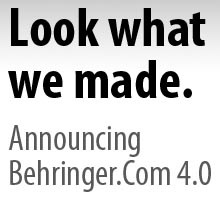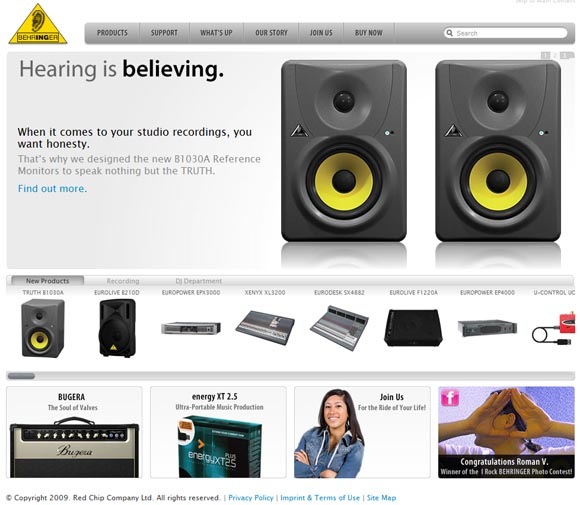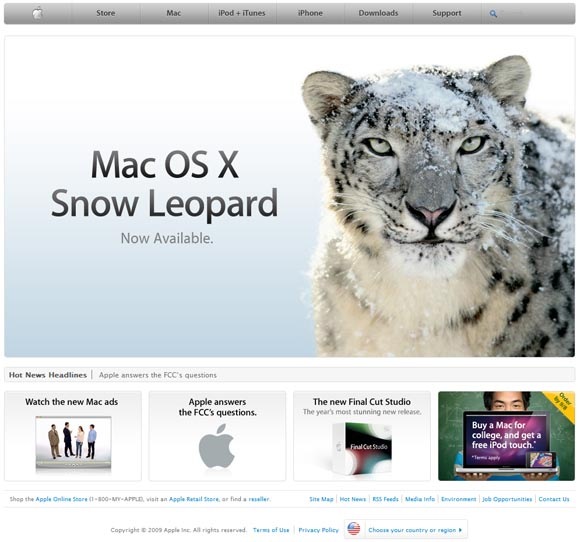 Look out: Behringer, already a notorious rip-off artist, is taking the “first step in [the] company’s reinvention of online presence.” I shudder to think what the coming steps will look like. But yes, the new site looks a wee bit familiar. It actually gets worse as you dig into the layout.
Look out: Behringer, already a notorious rip-off artist, is taking the “first step in [the] company’s reinvention of online presence.” I shudder to think what the coming steps will look like. But yes, the new site looks a wee bit familiar. It actually gets worse as you dig into the layout.
In fairness, for over a decade now, Apple’s site has perhaps the most ripped-off Website design on the Internet. But then, Behringer is special.
Back when the blog Music Thing was publishing, it was able to do an annual series on cloned Mackie and Roland/BOSS gear, some down to colors, typography, and control layouts. (Check out the MT archives for some of this hall of shame, or lack thereof.)
And Behringer doesn’t just copy the Apple layout like other sites. They actually send out a breathless press release that brags about their pixel-perfect, color-perfect clone.
Update: Apparently, you can thank readers of the Behringer Website for the choice. Mr. Tunes notes via Twitter that this design was chosen in a survey among other mock-ups, for which you could win a blatant rip-off of the Line 6 Pod. I could comment on that, but the things I might say would not make me a team player for “Team Behringer.”
After months of hard work from a 9-person development team, BEHRINGER launched a dramatically upgraded website today. Sporting an elegant, efficient aesthetic and an intuitive interface, the new site boasts a feature-rich series of upgrades…
Indeed, an inspection of image assets and CSS reveals that the development team really did re-create the design from scratch using their own images and code. (There’s 81 months of human development time the planet will never get back.)
Here’s the great irony: Behringer’s Terms of Use for their site.
This Site is provided for your personal and non-commercial use only. The purpose of this Site is to provide information on BEHRINGER and its products. All content included in this Site, including but not limited to any text, graphics, images, logos, button icons, data compilations, software, audio and video (collectively, "Materials"), is the property of BEHRINGER or its content suppliers, and you may not distribute, exchange, modify, reproduce, perform, sell or transmit the Materials for any business, commercial or public purposes. The Materials are protected by applicable laws and international copyright and trademark laws, and any unauthorized use of any Materials may violate copyright, trademark, and other applicable laws. You may not frame or utilize framing techniques to enclose any portion of this Site or any Materials without express written consent of BEHRINGER. You are granted a revocable and nonexclusive right to create a hyperlink to this Site so long as the link does not portray BEHRINGER, its affiliates, or their products/services in a false, misleading, derogatory, or otherwise offensive manner. You may not use any BEHRINGER trademark, logo or other Materials as part of the link without express written consent of BEHRINGER or as provided herein. If you breach any of these Terms, your authorization to use this Site automatically terminates and you must immediately destroy any downloaded or printed Materials herefrom.
Of course, the idea of Behringer’s proprietary intellectual property in this case is more than a bit absurd. Here’s Apple’s Terms of Use:
All text, graphics, user interfaces, visual interfaces, photographs, trademarks, logos, sounds, music, artwork and computer code (collectively, “Content”), including but not limited to the design, structure, selection, coordination, expression, “look and feel” and arrangement of such Content, contained on the Site is owned, controlled or licensed by or to Apple, and is protected by trade dress, copyright, patent and trademark laws, and various other intellectual property rights and unfair competition laws.
Indeed.
By the way, wasn’t “Seeing is Believing” the tag on one of the images on Apple’s site at some point? (Why would I not be surprised if that was, you know – nine months ago?)

